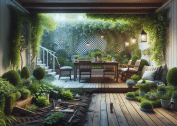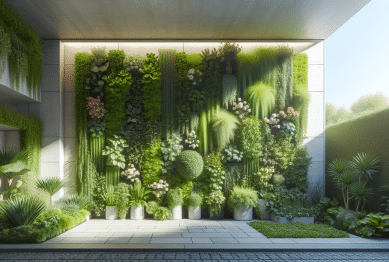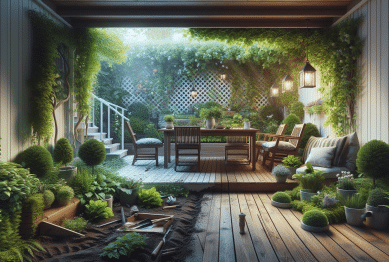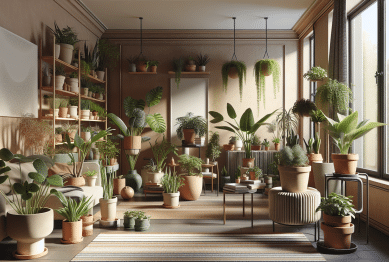Explore practical insights and expert-backed advice to help your indoor plants truly thrive. Discover what influences plant health, how lighting and watering choices impact growth, and why the right soil and placement can transform your home garden into a lush sanctuary.
Choosing the Right Indoor Plants for Your Space
Selecting suitable indoor plants is the first step in cultivating a flourishing indoor garden. Factors like available sunlight, room size, and even air quality can influence which species will thrive in a given space. While some prefer the ease of low-maintenance succulents, others might be drawn to large, leafy varieties that create visual impact. It’s important to match the plant’s needs with your environment, rather than simply opting for the most popular choice.
Understanding lighting conditions is crucial. South-facing windows typically provide the strongest and most consistent natural light, making them perfect for sun-loving species like fiddle leaf figs or monsteras. In contrast, spaces with less light may benefit from hardy options such as snake plants or pothos, which tolerate shade quite well. Matching the basic needs of the plant with your living environment supports healthier growth and longer-lasting greenery (Source: https://hgic.clemson.edu/factsheet/indoor-plants-clean-air/).
Air quality and humidity also play significant roles in plant success. Certain plants, such as ferns and peace lilies, naturally help purify air while requiring consistent moisture. Others, like cacti, are better suited for drier settings. Exploring the unique properties of each type broadens your options and sets the stage for a healthy indoor ecosystem where both air and aesthetics benefit.
Mastering Soil and Potting Techniques for Healthier Plants
Soil choice can make or break indoor gardening efforts. Good potting soil is designed to retain moisture while allowing excess water to drain away, preventing root rot and fungal issues from developing. Mixing in components like perlite, vermiculite, or orchid bark can improve aeration, which is vital for root development and overall plant vitality. Healthy roots anchor robust plants, so the right soil mix sets a solid foundation.
Pots with drainage holes are highly recommended. Without them, water accumulates at the base, increasing the risk of overwatering and subsequent root problems. If your favorite decorative container lacks drainage, consider doing a double-potting setup—place your plastic grower pot with holes inside the ornamental container. This allows excess water to escape while letting you enjoy stylish decor (Source: https://extension.psu.edu/indoor-plants-care-and-selected-types).
Repotting is not as daunting as it might seem. Most indoor plants need fresh soil and a slightly bigger pot every 12-24 months. Watch for roots circling the soil surface or poking through drainage holes—these are signs it’s time for an upgrade. Fresh potting medium boosts growth and reduces the risk of soil-borne pests, helping your foliage stay vibrant longer.
Understanding Watering Essentials and Avoiding Common Mistakes
Watering is often where indoor gardening goes awry. Too much water is as harmful as too little; learning your plant’s individual needs helps avoid common pitfalls. A good rule is to check soil moisture a few inches below the surface—if it’s dry, it’s time to water. Over time, you’ll notice different species require drastically different frequencies, from weekly soaks to monthly sips.
The type of water used matters, too. Tap water, especially if softened, can contain salts harmful to sensitive species. Whenever possible, use filtered or rainwater for moisture-loving plants. Be mindful of seasonal shifts—most indoor plants need less water in cooler months when their growth naturally slows (Source: https://extension.umn.edu/houseplants/general-houseplant-care).
Drainage is essential to preventing waterlogged roots. Always allow excess water to escape and avoid letting plants sit in standing water. Some hobbyists place pots on pebbled trays to increase humidity while still promoting healthy drainage. This gentle boost of moisture mimics tropical conditions that many popular houseplants love, without risking root damage.
Optimizing Light and Placement for Lush Growth
Not all indoor light is the same. Some plants quickly outgrow their spot if exposed to strong southern light, while others thrive in dim corners. Observing plant response—such as stretching toward windows or pale, limp leaves—reveals much about whether your plant is receiving the appropriate amount of light.
Indirect light is the sweet spot for many indoor plant varieties. Sheer curtains, blinds, or simply moving plants a few feet away from a window can create ideal conditions for lush, even growth. Supplemental grow lights offer another option, especially in rooms with limited access to natural sunlight. Experimenting with placement can produce surprising results and help each type flourish (Source: https://www.gardeningknowhow.com/houseplants/hpgen/learn-about-indoor-lighting-for-plants.htm).
Rotating plants ensures all sides receive light, helping to prevent uneven or leggy growth. Every few weeks, give pots a gentle quarter-turn. For hanging baskets or trailing plants, checking growth direction also supports balanced appearance. Observation becomes a key gardening tool as you fine-tune light exposure for each green resident.
Boosting Growth with Fertilization and Plant Care Routine
Fertilization provides essential nutrients that potting soil alone cannot supply indefinitely. Most plants benefit from balanced, water-soluble fertilizers applied during their active growing season, usually spring through summer. However, over-fertilizing can lead to salt build-up and browning of leaves, so always follow package guidelines closely and err on the side of caution.
Caring routines don’t have to be complicated. Consistency is key—regular watering schedules, seasonal feeding, and occasional pruning create healthier, happier plants. Removing dead leaves and faded flowers encourages new growth, while inspecting for pests or mildew keeps issues manageable before they spread (Source: https://web.extension.illinois.edu/houseplants/basics.cfm).
Sometimes, plants will signal their needs—wilting, unusual spots, or stunted growth are all signs to reassess care habits. Do not be afraid to adjust routines. Over time, attentive care can lead to remarkable transformations, with fuller foliage and sustained health throughout the year. Patience pays off through lush, green displays that enhance indoor spaces.
Managing Pests and Common Indoor Plant Challenges
Even with careful routines, pests can occasionally invade indoor gardens. Tiny insects like spider mites, aphids, or fungus gnats are among the most common adversaries. Regular inspection—especially under leaves and in soil—helps catch infestations early before serious damage occurs. Early intervention with safe solutions, like neem oil sprays or soap treatments, effectively controls these issues.
Other common challenges include fungal infections fostered by excess moisture and inadequate ventilation. Wilting, mushy roots, or mold on soil’s surface should prompt immediate action: reduce watering, improve airflow, or consider repotting the plant in fresh soil. Addressing these concerns quickly restores your garden’s health and beauty (Source: https://ipm.ucanr.edu/PMG/PESTNOTES/pn74127.html).
Prevention remains the most effective strategy. Isolate new plants when they first arrive and always sterilize tools before use. Avoid sharing soil or water between pots, as pests can spread rapidly from one plant to another. Informed observation and prompt action underpin every successful indoor garden, keeping potential headaches to a minimum while allowing plants to thrive.
References
1. Clemson Cooperative Extension. (n.d.). Indoor Plants: Clean Air. Retrieved from https://hgic.clemson.edu/factsheet/indoor-plants-clean-air/
2. Penn State Extension. (n.d.). Indoor Plants: Care and Selected Types. Retrieved from https://extension.psu.edu/indoor-plants-care-and-selected-types
3. University of Minnesota Extension. (n.d.). General Houseplant Care. Retrieved from https://extension.umn.edu/houseplants/general-houseplant-care
4. Gardening Know How. (n.d.). Learn About Indoor Lighting For Plants. Retrieved from https://www.gardeningknowhow.com/houseplants/hpgen/learn-about-indoor-lighting-for-plants.htm
5. University of Illinois Extension. (n.d.). Houseplants: The Basics. Retrieved from https://web.extension.illinois.edu/houseplants/basics.cfm
6. UC Integrated Pest Management Program. (n.d.). Pest Notes: Houseplant Problems. Retrieved from https://ipm.ucanr.edu/PMG/PESTNOTES/pn74127.html









